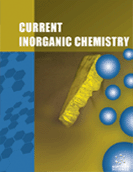Abstract
Water molecule is very simple in its structure and tends to form tetrahedrally arranged hydrogen bonds with other molecules. Bulk water inevitably crystallizes without being supercooled over 235 K even in a droplet with a diameter of µm. Water confined within nm spaces, being abundantly present on the earth, behaves differently from the bulk one. In this article, thermal properties of channel water confined in nanopores with hydrophilic crystalline and silica noncrystalline walls are elucidated with special attention paid to how the configurational-ordering and glass-transition phenomena depend on the pore-wall attributes and pore diameter. The former water even serves to stabilize formation of the crystalline complex framework and reveals a phase transition due to the ordering of the configuration of water molecules close to pore wall at low temperatures. Since the hydrogen-bond network formed is not conformable to that in pure water, however, the water molecules located in the pore center are left disordered with increasing the pore diameter. The latter water located in the center of pores with silica non-crystalline walls reveals intriguing pore-diameter dependence of the glass-transition temperature implying the formation of an ordered structure intrinsic to the low-temperature liquid water, while the interfacial water of one-molecular layer remains disordered without forming tetrahedrally arranged hydrogen bonds. This implication is experimentally supported by appearance of a first-order liquid-liquid phase transition in the water doped with hydroxylamine of a small amount. The information obtained must be useful to potential applications of various types of materials possessing such confined water; especially, it contributes to the issues of gas storage and fuel cells that are relevant to the structure and dynamics of confined water.
Keywords: Adiabatic calorimetry, confined water, glass transition, nanoporous materials, phase transition.
 10
10


